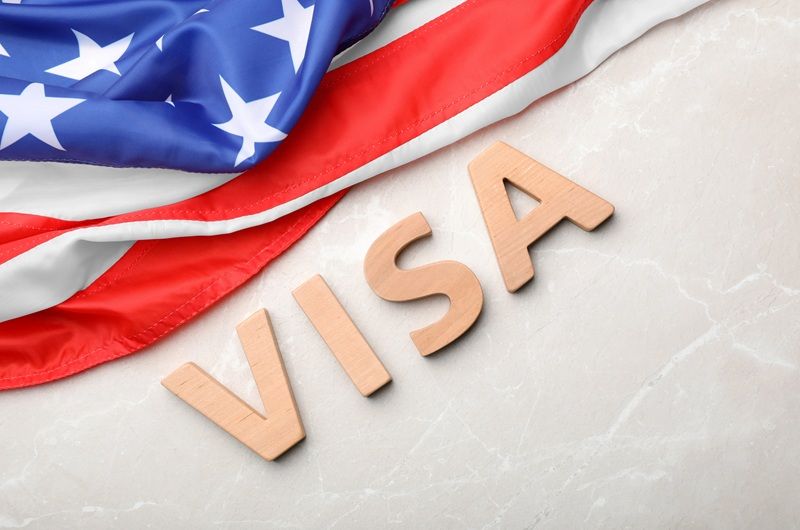How Long Does The U.S. Naturalization Process Take?
The U.S. naturalization process is a significant milestone for individuals seeking to become American citizens. However, questions about the time and effort required often accompany it. Many aspiring citizens wonder, “How long does the U.S. naturalization process take?” This inquiry is not only common but also carries great importance in the lives of those pursuing this path to citizenship.
Here, you will explore the factors that influence the duration of the naturalization process. As you read on, gain insights into the typical timeline applicants can expect.

What Does U.S. Naturalization Mean?
Naturalization is a phase through which foreign-born individuals go through to become citizens of the United States. It involves several steps and requirements that applicants must meet to obtain U.S. citizenship.
This process holds a pivotal role in shaping the dynamics of American society. For individuals, it signifies attaining an array of essential rights and privileges that enhance their quality of life. It includes the right to vote, access to government benefits, and the ability to reunite with family members.
Moreover, it opens doors to a broader spectrum of job opportunities. It amplifies economic participation and fosters a sense of belonging and civic responsibility. Naturalized citizens contribute to the nation’s rich tapestry by infusing diverse cultural perspectives, values, and traditions.
Immigrants, upon becoming citizens, often bring unique talents and experiences. These factors bolster the nation’s resilience, promoting economic advancement and societal progress. Their active civic participation and commitment to shared democratic principles contribute to a dynamic and inclusive society.
How Long Does The Process Take?
Typically, the naturalization process to become a U.S. citizen spans 18 to 24 months. Nonetheless, the timeline can vary due to multiple factors, which will be discussed later. If you’re a permanent resident ready to leap into U.S. citizenship, follow these ten steps from start to finish.
Step 1: Verify Your U.S. Citizenship
Before starting the naturalization process, confirming your U.S. citizenship eligibility is wise. You might already be one if you were born in the U.S. or its territories or have U.S. citizen parents. If not, proceed to the next step in the process.
Step 2: Check Your Eligibility
Eligibility is a fundamental aspect of the naturalization process. It ensures individuals know their rights and responsibilities and can navigate potential legal challenges. To qualify, candidates must meet specific criteria. It includes having lawful permanent resident status for at least five or three years if married to a U.S. citizen.
You must demonstrate good moral character through law-abiding behavior and tax compliance. Also, you must have been physically present in the United States for 30 months before applying.
Moreover, it also involves establishing residency in the relevant district or state for three months and passing English and civics tests. As a person wanting to be a naturalized citizen, you must express a commitment to the principles of the U.S. Constitution.
Step 3: Complete Form N-400
Form N-400 is a comprehensive application, vital for your naturalization process. Accurate completion is critical to avoid processing delays or denials. You must be meticulous in providing honest and complete responses. It includes revealing any past criminal history, international trips, and affiliations. Attach supporting documents like tax records and proof of good moral character.
Step 4: Submit The Form & Pay Fees
Once your application is ready, submit it to USCIS with the necessary fees conveniently online. After submission, USCIS provides a prompt receipt notice. The online portal offers easy access to track your case status and processing times, enhancing transparency and providing real-time updates on your naturalization progress.
Step 5: Attend A Biometrics Appointment
If your application requires biometrics, USCIS will send you a formal appointment notice specifying the date, time, and location. At the appointment, you’ll provide fingerprints and, if necessary, a photograph. This standard procedure is crucial for security checks and verification.
Step 6: Attend Your USCIS Interview
After you’ve finished the initial application stages, USCIS will arrange an interview to conclude the process. It’s vital to adhere to the date, time, and location specified in your notice, ensuring you bring the appointment notice. The interview is a pivotal step in your path to U.S. citizenship, involving a thorough review and assessment of your application.
Step 7: Await USCIS’ Decision On Your Application
After you’ve submitted Form N-400, USCIS will notify you of their decision. If you filed electronically, you can check online. There are three possible outcomes: Approval, if your evidence confirms eligibility; Continuation, if more documents or a retest is needed; and Denial, if your record doesn’t meet the required criteria for naturalization.
Step 8: Attend The Naturalization Ceremony
If USCIS approves your Form N-400, you might attend a same-day naturalization ceremony post-interview. If that’s not possible, you’ll receive an official notice specifying the ceremony’s date, time, and location. For online applicants, an electronic notice is also available in their application account.
The naturalization ceremony is a significant step in becoming a U.S. citizen. Participants recite the Oath of Allegiance during this event, pledging to uphold the U.S. Constitution. It’s a proud and patriotic moment symbolizing their integration into the American community.
Step 9: Attend The Oath Of Allegiance Ceremony
Becoming a U.S. citizen culminates in the Oath of Allegiance ceremony, signifying your commitment to uphold the U.S. Constitution. Before this, you’ll complete Form N-445, report to the event venue, and undergo a review.
After reciting the oath and surrendering your Green Card, you’ll receive your Certificate of Naturalization, signifying your new status as a U.S. citizen. It’s crucial to inspect the certificate at the ceremony and report any discrepancies to USCIS.
Step 10: Embracing U.S. Citizenship
U.S. citizenship encompasses a host of valuable benefits that greatly impact an individual’s rights and opportunities. Foremost among these privileges are the right to vote and participate in shaping the nation’s democratic processes.
Citizenship also brings the responsibility and honor of serving on juries, contributing to the functioning of the legal system.
Moreover, it unlocks the freedom of international travel, facilitating seamless entry into various countries.
It’s crucial for maintaining U.S. residency and actively engaging in civic life, shaping the nation’s social, political, and educational landscape. Moreover, the path to citizenship may appear intricate, but understanding the factors influencing the process’s duration can be beneficial.
What Are The Factors Affecting The Timeline?
Understanding the factors that influence the processing time of immigration applications is crucial for managing expectations and navigating the process effectively. Several vital elements come into play:
USCIS Workloads
The workload at U.S. Citizenship and Immigration Services (USCIS) offices is a pivotal determinant of processing time. USCIS receives a substantial number of applications, and this heavy workload can lead to longer processing times as officers meticulously review and evaluate each submission.

Current Waiting Periods
Another critical aspect to consider is the current waiting periods. USCIS provides estimated processing times for different immigration applications based on historical data. However, these times can vary depending on the specific application type and the USCIS local branch responsible for processing it. To stay informed, you can check the USCIS website for the estimated processing times of your application.
Backlogs & Delays
Backlogs within the system can significantly impact the timeline of your application. This situation arises when the number of applications surpasses USCIS’s processing capacity. Unforeseen circumstances, such as policy changes or natural disasters, can further contribute to delays in the processing of applications.
Completeness Of The Application
Ensuring the completeness and accuracy of your application is your responsibility. Any deficiencies may prompt USCIS officers to request additional information or clarifications. It can result in extended processing times. Including all necessary documentation and correctly filling out the application is crucial to avoiding unnecessary delays.
Security Clearances
Background checks and security clearances conducted by USCIS are essential for verifying the eligibility of applicants and ensuring public safety. The complexity of these checks and any potential associated issues or delays can impact the overall processing timeline.
By comprehending these factors affecting processing times, you can be better prepared for potential delays and plan accordingly. Taking a proactive approach, such as promptly responding to requests for additional evidence, can help expedite the process with the help of an immigration attorney.
Why Must You Work With An Immigration Attorney?
Hiring an immigration attorney for naturalization can offer numerous benefits. First and foremost, attorneys are well-versed in immigration law, ensuring that your application is accurately prepared and submitted. They can assess your eligibility, guide you through the complex paperwork, and help you gather the required documentation.
Immigration attorneys are also skilled in addressing potential legal issues or delays that may arise during the naturalization process. Furthermore, an immigration attorney can represent your interests and communicate with immigration authorities. They offer a layer of legal protection, ensuring your rights are upheld.
The U.S. naturalization process is a significant endeavor with implications for individuals and society. It grants access to various rights, benefits, and civic responsibilities, contributing to the nation’s diversity and progress. The process typically spans 18 to 24 months but is subject to various factors. It includes USCIS workloads, waiting periods, backlogs, application completeness, and security clearances.
To navigate it effectively, hiring an immigration attorney is advantageous. They ensure accurate submission, guide you through complex requirements, address legal issues, and represent your interests. They play a crucial role in safeguarding your rights and expediting the process, especially in the face of potential delays.
Contact A U.S. Immigration Attorney Today!
Categories
How To Find Us
What Our Clients Say
“This Lawfirm is great, very professional and helpful. I love that they are always in communication and always available for when you have questions . 100% recommended by me and my family. Thank you Lincoln-Goldfinch Law – Abogados de Inmigración”





